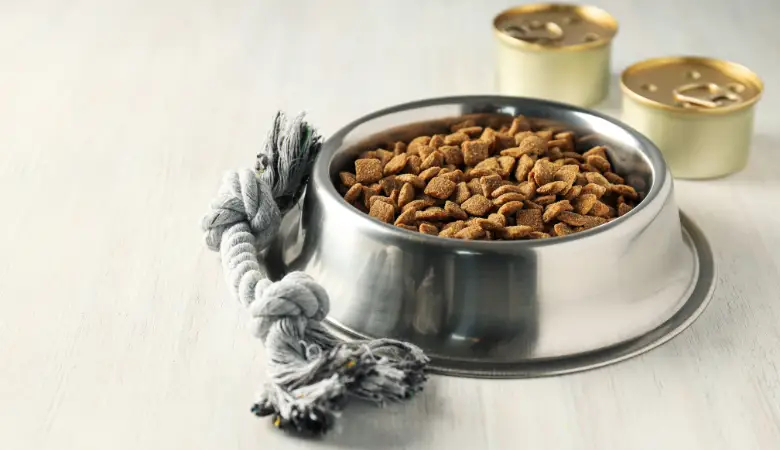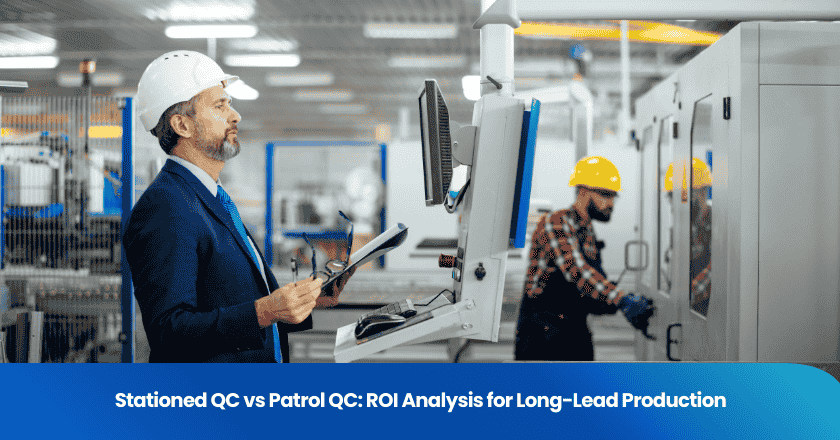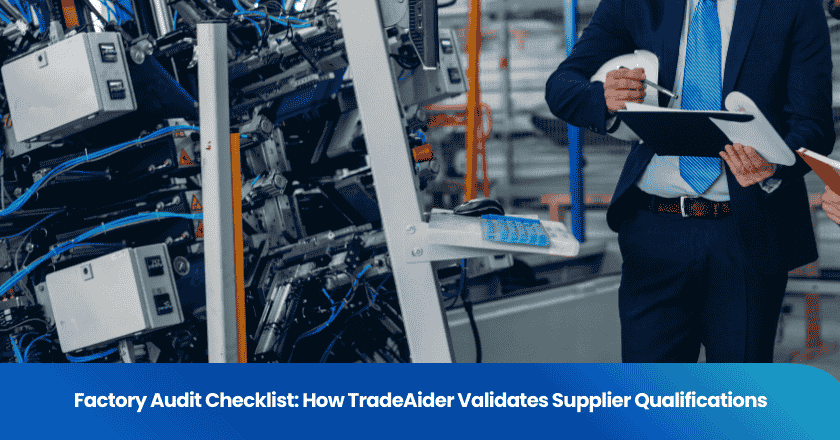
Quality inspection in pet food stands as a vital safeguard in the pet food industry. Pet food manufacturers rely on strict inspection protocols to uphold safety and nutritional standards throughout the pet food manufacturing process. The pet food industry demands precision, so pet food manufacturers use advanced technology to detect potential risks. Inspection at every stage of the pet food manufacturing process helps the pet food industry maintain trust. Pet food manufacturers conduct multiple inspection steps to ensure quality inspection in pet food meets regulatory and consumer expectations.
Key Takeaways
• Pet food manufacturers check raw materials carefully to ensure safety and nutrition before production starts.
• During production, teams monitor mixing, cooking, metal detection, and weight to keep food safe and consistent.
• Finished products undergo lab tests and sensory checks to confirm quality before release to consumers.
• Packaging and storage inspections protect pet food from damage, contamination, and spoilage.
• Detailed documentation and product tracing help manufacturers track batches and respond quickly to any issues.
Raw Material Checks
Raw material checks form the foundation of quality inspection in pet food. Pet food manufacturers understand that the safety and nutritional value of the final product depend on the quality of every ingredient. Before pet food production begins, teams conduct a series of inspections to verify that all raw materials meet strict standards.
Supplier Audits
Pet food manufacturers start the process with supplier audits. These audits involve a thorough evaluation of each supplier’s facility, processes, and quality control systems. Auditors review documentation, inspect storage conditions, and assess hygiene practices. They also check for compliance with regulatory requirements. Reliable suppliers must demonstrate consistent delivery of safe and high-quality ingredients. By conducting regular audits, pet food manufacturers reduce the risk of contamination and ensure that only approved sources supply ingredients for pet food production.
Note: Supplier audits help identify potential risks before ingredients enter the facility. This proactive approach supports the integrity of the entire pet food production chain.
Ingredient Testing
Once ingredients arrive at the facility, inspection teams perform detailed ingredient testing. Technicians collect samples from every batch and analyze them for contaminants such as pesticides, heavy metals, and pathogens. Allergen testing also plays a critical role, especially for ingredients that may trigger sensitivities in pets. Nutritional analysis confirms that protein, fat, fiber, and moisture levels meet the specifications required for balanced pet food production. These tests ensure that each ingredient supports the nutritional needs of pets and aligns with product formulations.
• Common ingredient tests include:
◦ Microbiological screening for Salmonella and E. coli
◦ Chemical analysis for toxins and residues
◦ Nutritional profiling for protein, fat, and fiber content
NIR Analysis
Near-Infrared Reflectance (NIR) analysis has become a standard tool in pet food production. This technology allows rapid, non-destructive testing of raw materials. NIR devices scan ingredients to determine their nutritional composition, including protein, fat, and moisture levels. Results appear within minutes, enabling real-time quality control during inspection. NIR analysis helps pet food manufacturers adjust formulations quickly if any ingredient falls outside the desired nutritional range.
Tip: NIR analysis improves efficiency and accuracy in pet food production. It supports consistent nutritional quality in every batch.
Raw material checks represent the first and most crucial step in quality inspection in pet food. By verifying ingredient quality before pet food production, manufacturers protect pets and maintain consumer trust. These inspections ensure that every product meets nutritional standards and regulatory requirements.
In-Process Control
During pet food production, in-process control stands as a critical phase for maintaining product safety and consistency. Multiple inspection points exist throughout this stage to ensure that every batch meets strict standards.
Mixing and Cooking
Operators begin by carefully mixing raw ingredients. They monitor the process to guarantee even distribution of nutrients. Temperature checks occur at regular intervals. Proper cooking destroys harmful bacteria and ensures the food reaches the desired texture. Inspection teams record data from each batch. They verify that the cooking process aligns with established quality control parameters. This step in pet food production helps prevent nutrient loss and supports food safety.
Note: Consistent temperature monitoring during mixing and cooking reduces the risk of undercooked or unevenly processed pet food.
Metal Detection
After cooking, pet food production lines use advanced metal detection systems. These machines scan for foreign bodies such as metal fragments. Inspection at this stage protects pets from potential harm. Operators calibrate metal detectors frequently to maintain sensitivity. If the system detects any contamination, the affected product is immediately removed from the line. This inspection step demonstrates a strong commitment to quality control in pet food production.
Weight Checks
Automated checkweighers perform dynamic weight checks on every package. Inspection teams ensure that each unit meets the specified weight range. Consistent weight supports accurate labeling and regulatory compliance. If a package falls outside the acceptable range, the system rejects it. This process maintains uniformity in pet food production and upholds consumer trust.
In-process control relies on a series of inspection checkpoints. These steps, from mixing to weight checks, form the backbone of quality control during pet food production.
Finished Product Inspection
After in-process control, finished product inspection ensures that every batch meets strict safety and nutritional standards. This stage involves several critical steps before pet food reaches the market.
Lab Testing
Laboratory analysis plays a central role in finished product inspection. Technicians collect samples from each batch and perform comprehensive tests. These tests confirm that the product contains the correct nutritional content, including protein, fat, fiber, and moisture. Microbiological screening checks for harmful bacteria such as Salmonella and E. coli. Chemical analysis detects toxins and verifies that the product is free from contaminants. Nutritional consistency remains a top priority, so teams compare results against established specifications. This process supports the overall goal of quality inspection in pet food.
Tip: Regular lab testing helps maintain compliance with regulatory standards and protects pets from potential hazards.
Sensory Checks
Inspection teams also conduct sensory evaluations. They assess the appearance, aroma, texture, and taste of the finished product. Sensory checks ensure that the food appeals to pets and meets consumer expectations. Inspectors use standardized scoring sheets to record their observations. Any deviation from the desired sensory profile prompts further investigation. Sensory inspection complements laboratory analysis by providing a holistic view of product quality.
Batch Release
Before distribution, each batch must pass a final inspection. Quality assurance teams review all test results and inspection records. They verify that the product meets nutritional requirements and safety criteria. Only batches that satisfy every standard receive approval for release. If a batch fails to meet specifications, teams initiate corrective actions. Regulatory agencies, such as the FDA, may also conduct inspections and enforce recall procedures if necessary. This rigorous approach ensures that only safe, high-quality pet food reaches consumers.
Packaging and Storage
Packaging Integrity
Packaging integrity plays a vital role in maintaining pet food safety. Teams perform inspection at this stage to check for any damage, leaks, or improper seals. They use both visual and mechanical methods to confirm that every package protects its contents from contamination. Operators often use pressure tests or vacuum checks to ensure airtight seals. If a package fails inspection, staff remove it from the production line to prevent compromised products from reaching consumers.
Note: Proper packaging prevents moisture, pests, and air from affecting pet food quality.
Label Review
Accurate labeling supports both regulatory compliance and consumer trust. Inspection teams review each label for correct ingredient lists, nutritional information, and expiration dates. They verify that all required warnings and feeding instructions appear clearly. A checklist helps inspectors confirm that every label matches the product inside the package.
• Label review checklist:
◦ Ingredient accuracy
◦ Nutritional values
◦ Allergen statements
◦ Batch codes and dates
If inspectors find errors during inspection, they halt distribution until corrections occur. This process ensures that pet owners receive clear and truthful information.
Storage Monitoring
Proper storage conditions protect finished pet food from spoilage and contamination. Inspection teams monitor temperature and humidity in storage areas. They use sensors and regular manual checks to maintain optimal conditions. Staff rotate stock using the first-in, first-out method to reduce the risk of expired products. Inspection records track storage performance and help identify any issues quickly.
| Storage Factor | Inspection Method | Frequency |
|---|---|---|
| Temperature | Digital sensors | Continuous |
| Humidity | Manual checks | Daily |
| Pest control | Visual inspection | Weekly |
Consistent inspection during packaging and storage helps maintain product quality and safety until the pet food reaches the consumer.
Documentation & Traceability
SOPs
Standard operating procedures (SOPs) guide every step in the quality inspection process. Pet food manufacturers develop detailed SOPs to ensure consistency and accuracy. These documents outline how employees should handle raw materials, conduct inspections, and respond to deviations. SOPs help teams follow best practices and meet regulatory requirements. Clear instructions reduce errors and support efficient training for new staff.
Tip: Well-written SOPs make it easier for teams to maintain high standards during every inspection.
Record Keeping
Accurate record keeping forms the backbone of quality assurance. Teams document each inspection, test result, and corrective action. Pet food manufacturers store these records securely for future reference. Auditors often review these documents during routine checks. Good record keeping allows quick identification of trends or recurring issues. It also provides evidence of compliance with safety standards.
• Key records include:
◦ Inspection logs
◦ Test results
◦ Equipment calibration reports
◦ Corrective action reports
Product Tracing
Product tracing enables rapid response if a problem arises. Teams assign unique codes to each batch during production. These codes link finished products to specific raw materials and processing dates. If an issue occurs, staff can trace affected products quickly and remove them from distribution. Effective tracing supports recalls and protects both pets and consumers.
| Traceability Step | Purpose |
|---|---|
| Batch coding | Identify product origin |
| Distribution logs | Track product movement |
| Recall readiness | Enable swift action |
Comprehensive documentation and traceability strengthen the entire inspection process. These practices help pet food manufacturers demonstrate accountability and maintain consumer trust.
Each inspection step in the pet food industry protects both pets and consumers. Teams use systematic procedures and advanced technology to maintain high standards. The pet food industry relies on quality inspection in pet food to deliver safe, nutritious products. Careful inspection at every stage builds trust and supports the reputation of the entire industry.
FAQ
What is the main goal of quality inspection in pet food manufacturing?
Quality inspection aims to ensure pet food meets safety and nutritional standards. Teams check every stage of production to protect pets and maintain consumer trust.
How do manufacturers detect contaminants in pet food?
Technicians use laboratory tests, metal detectors, and NIR analysis. These tools help identify bacteria, toxins, and foreign objects before products reach the market.
Why is traceability important in pet food production?
Traceability allows teams to track each batch from raw materials to distribution. This process supports quick recalls and helps maintain accountability throughout the supply chain.
What role do SOPs play in quality inspection?
Standard operating procedures guide employees through each inspection step. SOPs help maintain consistency, reduce errors, and ensure compliance with industry regulations.
How often do inspection teams check storage conditions?
Teams monitor storage conditions continuously with digital sensors. They also perform manual checks daily to ensure temperature and humidity remain within safe ranges.
Grow your business with TradeAider Service
Click the button below to directly enter the TradeAider Service System. The simple steps from booking and payment to receiving reports are easy to operate.

.png)

